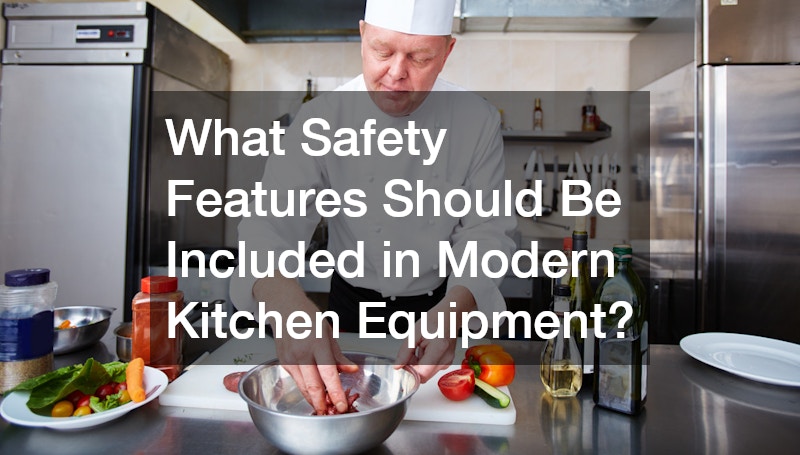Understanding the essential commercial kitchen equipment is crucial for anyone considering starting or optimizing a restaurant. In this article, we will explore the various types of equipment that are indispensable in a professional kitchen and provide insights into choosing the right tools for your culinary endeavors.
What Are the Essential Commercial Kitchen Appliances?
Cooking Appliances
Cooking appliances such as ranges, ovens, and fryers form the backbone of commercial kitchens. These powerful tools help chefs prepare a wide range of dishes efficiently, allowing them to serve a large number of customers with ease.
Ranges provide versatility, enabling chefs to sauté, boil, and grill dishes simultaneously. Ovens are essential for baking, roasting, and broiling, making them an indispensable part of any restaurant setup.
Fryers are designed to handle large volumes, making them perfect for high-demand dishes like fries and crispy, fried entrees. This equipment significantly contributes to the efficiency and quality of the culinary output.
Refrigeration Equipment
Refrigeration equipment is vital for keeping ingredients fresh and safe while maintaining the integrity of perishable items. Walk-in coolers and freezers provide large-scale storage solutions for restaurants with extensive menus.
Reach-in refrigerators offer more immediate access for kitchen staff to frequently used ingredients, ensuring fast-paced food preparation. Specialty refrigeration units like blast chillers quickly reduce the temperature of hot foods, preserving both safety and taste.
Advanced models often include features to maintain consistent temperatures, which is critical for food safety standards and minimizing waste. Effective use of refrigeration equipment can significantly impact a restaurant’s inventory management and cost efficiency.
What Factors Should Be Considered When Choosing Kitchen Equipment?
Space and Layout
The space available and the layout of a kitchen play a crucial role in equipment selection. Chefs must consider how to optimize the workflow to reduce unnecessary movement and improve efficiency.
Compact equipment options can enable smaller kitchens to operate just as effectively as their larger counterparts. Strategically placed appliances can ease access and ensure that chefs and kitchen staff can work without hindrance.
Additionally, the equipment’s size must complement existing kitchen dimensions to facilitate smooth operations. Properly planned layouts contribute to safer, more organized work environments.
Budget Constraints
Budget constraints are a common challenge for many restaurant owners when selecting commercial kitchen equipment. It is essential to find a balance between quality and cost to ensure longevity and performance.
Purchasing second-hand equipment can be a cost-effective solution for those starting, but careful assessments of condition and potential future repairs must be considered. Prioritizing the purchase of essential items first can help manage expenses while still equipping the kitchen effectively.
Investing in key high-quality appliances may initially seem expensive, but it often results in long-term savings by reducing repair and replacement costs. Ultimately, a well-planned budget ensures operational success and sustainability.
How Can You Ensure the Longevity of Commercial Kitchen Equipment?
Regular Maintenance Practices
Regular maintenance practices are key to extending the life of commercial kitchen equipment. Routine checks and cleaning protocols not only prevent wear and tear but also enhance performance.
Scheduling professional servicing can uncover hidden issues that may not be visible during everyday use. Adopting a proactive approach to maintenance helps avoid costly downtimes and repairs.
Keeping a detailed log of maintenance activities supports adherence to service intervals, protecting restaurant investments. A well-maintained kitchen not only ensures efficiency but also safety for all staff.
Importance of Quality
The choice of materials and brands significantly influences the longevity of kitchen equipment. Investing in durable, high-quality appliances can lead to superior performance and fewer breakdowns.
Opting for equipment from reputable manufacturers often comes with guarantees and superior customer support. This ensures reliability and peace of mind for restaurant owners and chefs alike.
Quality equipment tends to offer greater durability, withstanding the rigors of daily use in a busy kitchen environment. By prioritizing quality over mere cost, restaurants can save in the long run through reduced maintenance needs.
What Safety Features Should Be Included in Modern Kitchen Equipment?
Fire Suppression Systems
Fire suppression systems are a critical safety feature in commercial kitchens, minimizing the risk of fire-related incidents. These systems can automatically detect and extinguish fires, providing vital protection for staff and patrons.
Integrating fire suppression systems into kitchen hoods and appliances helps ensure compliance with fire safety regulations. This integration is instrumental to restaurant safety protocols, potentially preventing major disasters.
Periodic checks and maintenance of these systems ensure that they function effectively when needed. A reliable fire suppression system is essential for safeguarding investments and livelihoods.
Equipment Ergonomics
Ergonomic design in kitchen equipment is increasingly important for reducing physical strain and preventing workplace injuries. By prioritizing ergonomics, restaurant staff experience improved comfort and reduced fatigue.
Features such as adjustable workstations and tools designed for natural hand movements contribute to a more efficient work environment. Ergonomic equipment design encourages proper postures, which can help avoid long-term health issues for employees.
As restaurants strive to create safe and productive workplaces, investing in ergonomic solutions becomes increasingly prioritized. Improved ergonomics enhance overall workflow and satisfaction among kitchen staff.




